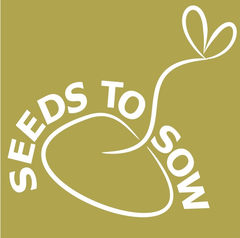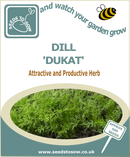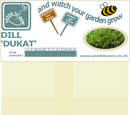Description
Dill Dukat has an abundant foliage which is sweet and aromatic and the seeds have a sharper flavour which are used as a spice.
Dill has many culinary uses and particularly goes well with fish. Dill is easy to grow and is a very attractive plant, with its fern like leaves, whether grown in a container or garden bed.
| When to Sow | All year round on a windowsill or March to June outdoors. |
| Where to Sow | Sow seeds indoors 1.5cm (½in) deep, in pots or trays of compost and lightly cover the seeds with a sprinkling of compost , and place on a light windowsill. |
| Sow thinly direct outdoors where they are to crop, 1.5cm (½in) deep, into finely-prepared soil. | |
| Keep soil moist at all times. | |
| What to do Next | Seeds sown direct outside should be thinned out to 20cm (8in) apart once the seedlings are large enough to handle. |
| Keep the plants weed free and water during dry periods. | |
| Pick a few leaves, as required, from each plant so that they regrow quickly. | |
| Harvest | Indoor crops all year round and outdoor crops from May. |
| Handy Tips | Harvest the leaves when young for fresh use or drying. |
| If only leaves are required remove the flowers. | |
| When the seeds are ripe and turn brown on outdoor crops, cut the stems, shake the seeds into a paper bag and dry indoors. | |
| Companion Planting | Good companions to Cabbage, Lettuce, Onions, Sweetcorn and Cucumbers. |
| Nutritional Information | Has a significant amount of vitamin A and Vitamin C as well as trace amounts of folate, iron and manganese. |
| Serving Suggestion | Great for use in homemade pickles and sauces or served with fish, especially salmon or trout. |
Payment & Security
Your payment information is processed securely. We do not store credit card details nor have access to your credit card information.






